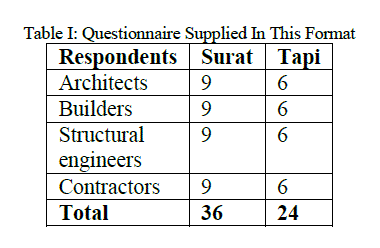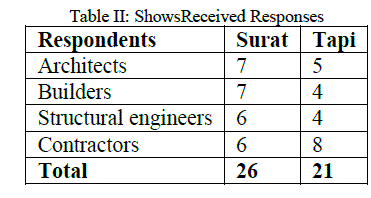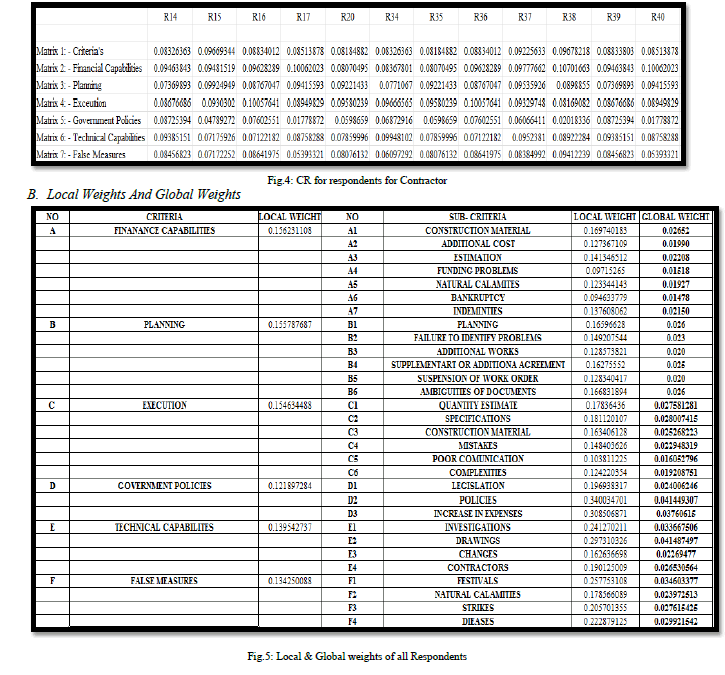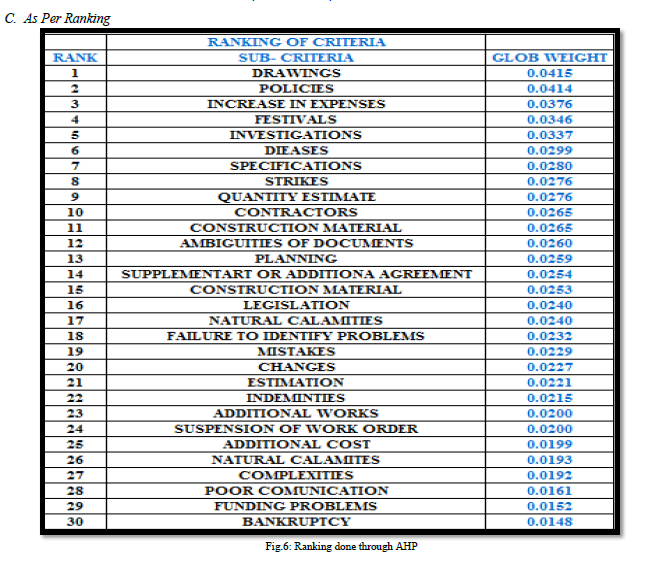ISSN ONLINE(2319-8753)PRINT(2347-6710)
ISSN ONLINE(2319-8753)PRINT(2347-6710)
Hiral H. Patel1, Chirag J. Shah2, Rushabh A. Shah3, Urvesh N. Barot3
|
| Related article at Pubmed, Scholar Google |
Visit for more related articles at International Journal of Innovative Research in Science, Engineering and Technology
This research work has been aimed to find out the causes that are causing cost overruns in the construction projects. This research activity was entirely assessed through questionnaire survey. Various literatures have been reviewed for assessment and evaluation of factors that are causing cost overruns in construction projects. The respondents were selected from various construction occupancy mainly architects, builders, contractors, structural engineers and various consultancy firms. The results accomplished from survey revealed that the major causes of delays and cost overruns during construction projects are the escalation of the materials prices and discontinuity of funds. The overall ranking analysis are indicating that Technical Drawings, Government Policies, Increase in Expenses, Festivals, Investigation or Tests and Specifications are most critical factors, that are responsible for construction cost overruns in South Gujarat specially in Tapi and Surat District
Keywords |
| AHP technique, Construction Industry, Cost Management, Cost Overruns, Consistency Ratio,Global Weights, Local Weights, Ranking. |
I.INTRODUCTION |
| Construction industry is a very complex industry in which cost is the most crucial factor ultimately governing the completion of the project within the planned budget as well as stipulated time. Construction industry are facing large amount of cost overruns affecting the success of project. Despite of the construction project management there has been a need arisen to investigate out the various causes of cost overruns as it hinders the progress of construction project. Firstly, in order to control the cost overruns it is necessary to analyse the crucial reasons of various causes of cost overruns by knowing the opinions from the persons that have been involved in construction industry. |
II.ANALYTICAL HIERARCHY PROCESS (AHP) |
| The analytic hierarchy process (AHP) is a structured technique for organizing and analysing complex decisions. AHP is a multiple criteria decision-making tool that has been used in almost all the applications related with decisionmaking. The Analytic Hierarchy Process (AHP) is a multi-criteria decision-making approach and was introduced by Saaty. Users of the AHP first decompose their decision problem into a hierarchy of more easily comprehended subproblems, each of which can be analysed independently. Users of the AHP first decompose their decision problem into a hierarchy of more easily comprehended sub-problems, each of which can be analysed independently. Once the hierarchy is built, the decision makers systematically evaluate its various elements by comparing them to one another two at a time, with respect to their impact on an element above the min the hierarchy. The AHP converts these evaluations to numerical values that can be processed and compared over the entire range of the problem. In the final the process, numerical priorities are calculated for each of the decision alternatives. These numbers represent healternatives relative ability to achieve the ,so they allow a straight forward consideration of the various courses of action. The results have been derived by using a Pair wise Scale comparison through which the matrices have been generated. Through which accordingly the Local & Global weights have been calculated and based on this Ranking was done for various criteria’s that were affecting cost overruns. |
III. LIST OF CRITERIA |
| For the purpose of this research work the factors of cost overruns have been classified into 5 main criteria along with the various sub criteria after studying various literatures of Cost Overruns which are listed below: |
| 1. Finance Capabilities: - Construction materials, Additional costs, Estimation, Funding problems, Natural calamities, Bankruptcy, Indemnities. |
| 2. Planning: -Planning, Failure to identify problems, Additional work, Supplementary / additional agreement, Suspension of work ordered by the engineer, Ambiguities or discrepancies of documents. |
| 3. Execution: -Quantity estimate, Specifications, Construction materials, Mistakes, Poor communication, Complexity. |
| 4. Government Policies: -Legislation, Policies, Increase in Expenses. |
| 5. Technical Capabilities: - Investigation / Tests, Drawings, Changes, Contractor. |
| 6. False Measure: -Festivals, Natural Calamities, Strikes, Diseases. |
I. SAMPLE SIZE CALCULATION [5] |
| According to the targeted area the total number of available population is 3488 which comprises of 355 Architects, 2186 Builders, 485 Structural engineers and 462 Contractor. To obtain statistically representative sample size of the population following equation used: |
 |
 |
II. RESULT ANALYSIS |
 |
 |
 |
III. CONCLUSION |
| The construction industry is complex industry as it has numerous amounts of parameters that all are needed to be managed for the successful completion of the project. Despite of the various project management techniques it was seen that construction industries were facing huge amount of cost overruns. Thus, construction industry needs judicious attention regarding the cost overruns that are occurring in the construction industry. Present approach has certain short comings and it is improved by application of scientific technique. After studied the an ecdotal literature to analyze the short comings of the present approach, Analytical Hierarchy Process (AHP) method was selected to find out the crucial causes of cost overruns that are affecting the successful completion of the project. According to the Analytical Hierarchy Process, Development of the Criteria Framework in Indian context was prepared. After analyzing the various causes, amongst which 10 most crucial criteria that are causing cost overruns were: |
| 1. Drawings, |
| 2. Policies, |
| 3. Increase in Expenses, |
| 4. Festivals, |
| 5. Investigation, |
| 6. Diseases, |
| 7. Specifications, |
| 8. Strikes |
| 9. Quantity Estimate |
| 10. Contractors |
| If these crucial factors causing cost overruns are controlled to some extent then overall project cost overruns can be controlled to some extent. The knowledge and significance of cost overruns causes and the way it is affecting construction projects might prove to be beneficial amongst the various stakeholders that have been involved in construction industry. |
ACKNOWLEDGMENT |
| The authors are thankfully acknowledge to Mr. J. N. Patel, Chairman Vidyabharti Trust, Mr. K. N. Patel, Hon. Secretary, Vidyabharti Trust; Dr. H. R. Patel, Director;Dr. J. A. Shah, Principal, S.N.P.I.T. & R.C., Umrakh, Bardoli, Gujarat, India for their motivational & infrastructural supports to carry out this research, Dr.Neeraj D. Sharma, HOD Civil Department, SNPIT & RC, Umrakh; Mr.Vyom B. Pathak, Assistant Professor & Research Scholar,Civil Department, SNPIT & RC, Umrakh; and at last to Mr.Bhavik K. Daxini, Assistant Professor, Marwadi College, Rajkot. We express our wholeheartedlygratitude to our respondents - Architects, Builders, Structural Engineers and Contractors for sparing their valuable time and knowledge for accomplishing with our project work. |
References |
|